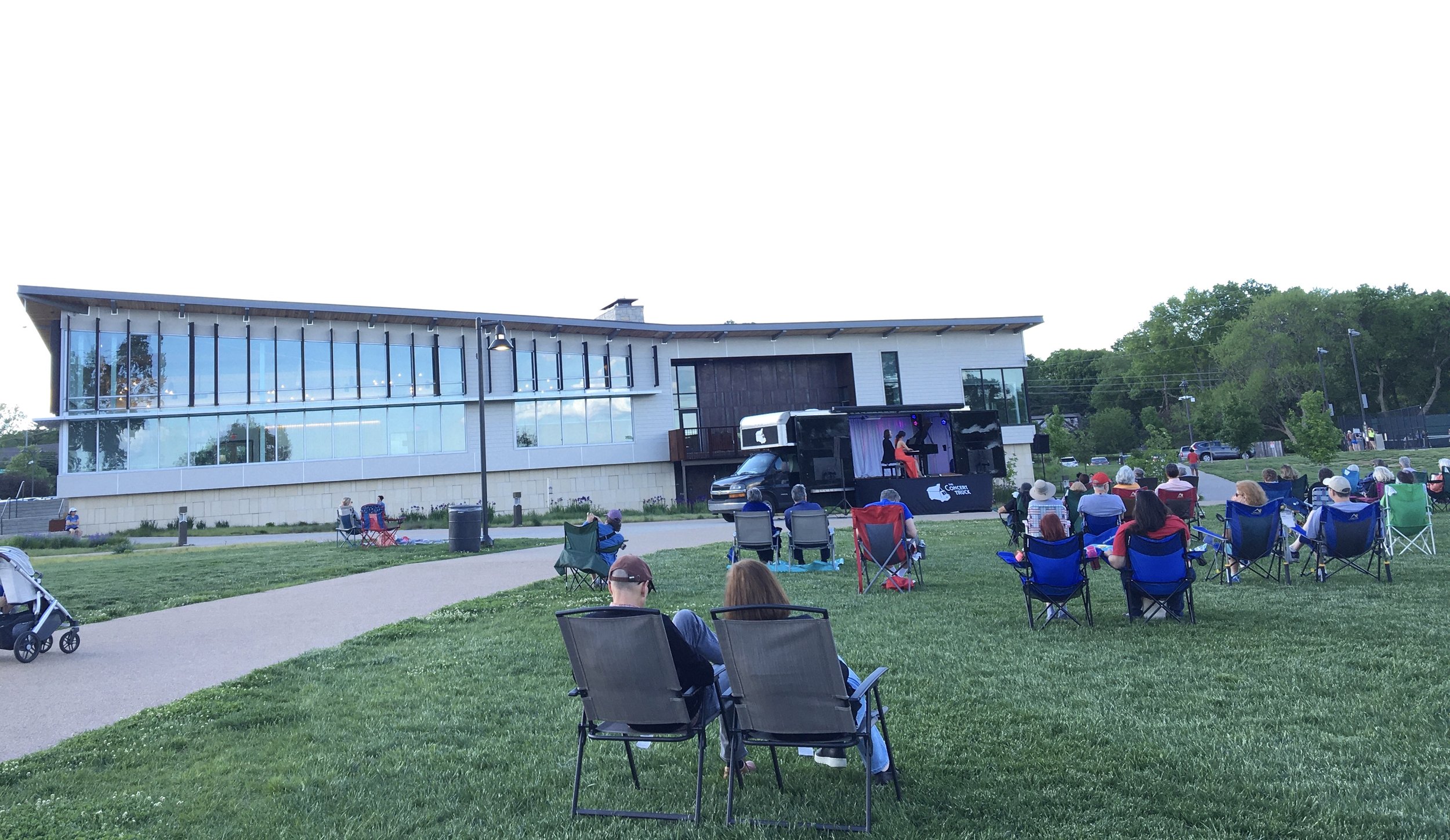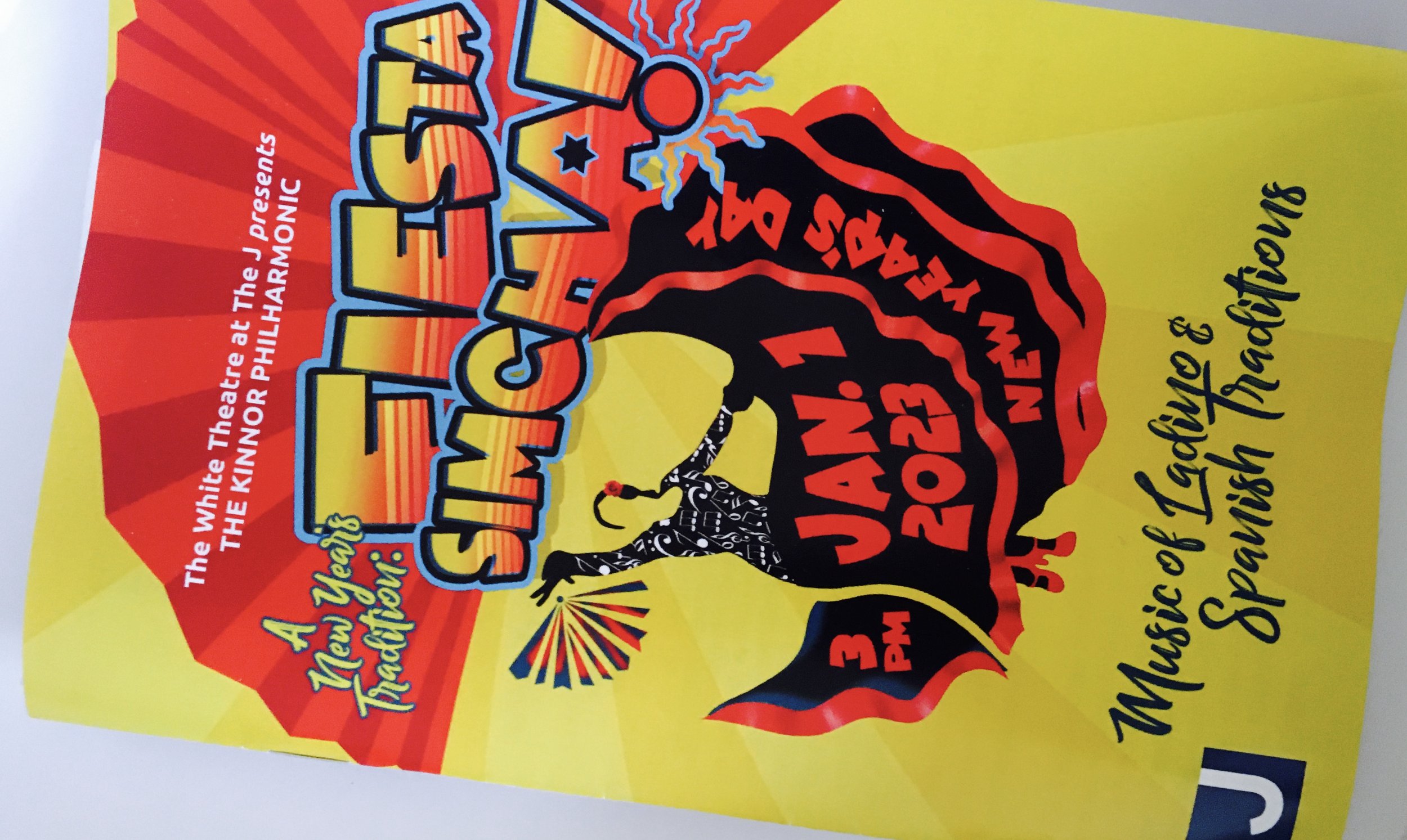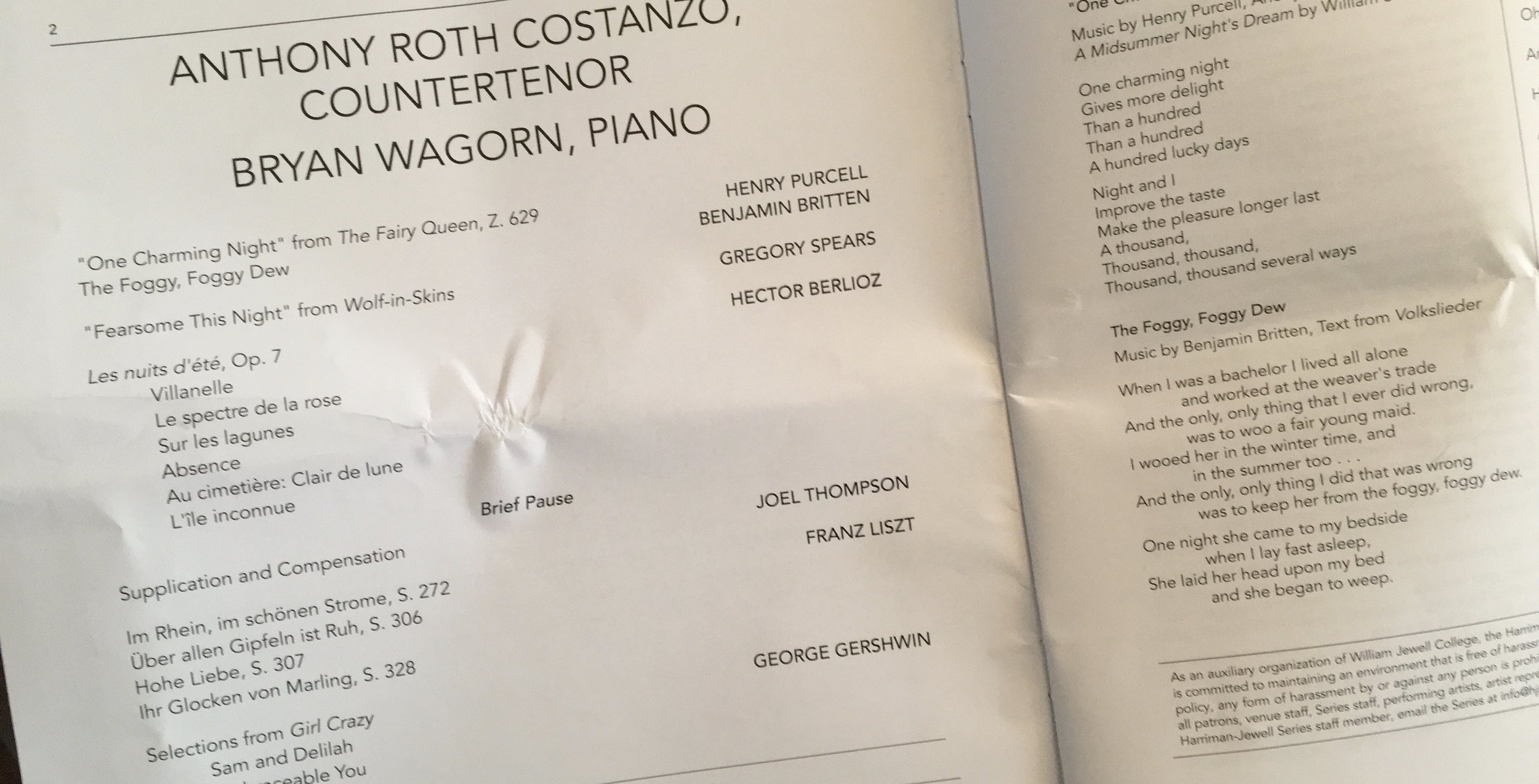Original image by There Stands the Glass.
I don’t believe I’d heard a Meredith Monk composition performed in the Kansas City area until Thursday, May 9. An unexpectedly daring concert at Meadowbrook Park surprised me. Unpromisingly billed as The Concert Truck, I’d supposed the Midwest Trust Center-sponsored piano duo of Nick Luby and Susan Zhang would present land-locked cruise ship pabulum.
Yet rather than covers of Billy Joel and Journey, the tandem’s impeccable setlist included compositions by Samuel Barber, Maurice Ravel, Béla Bartok, Meredith Monk, John Adams, William Grant Still and George Gershwin. Only “Rhapsody in Blue” seemed like a compromise. My date said Gershwin’s piece is still “trying to decide what it wants to be,” the most incisive commentary I’ve encountered during the composition’s centenary.
The informal setting negated a proper assessment of the quality of the playing. Distortion in the amplified sound, percussive thwacking from nearby pickleball courts and the shrieks of happy children muddled what may very well have been an otherwise impeccable performance.




